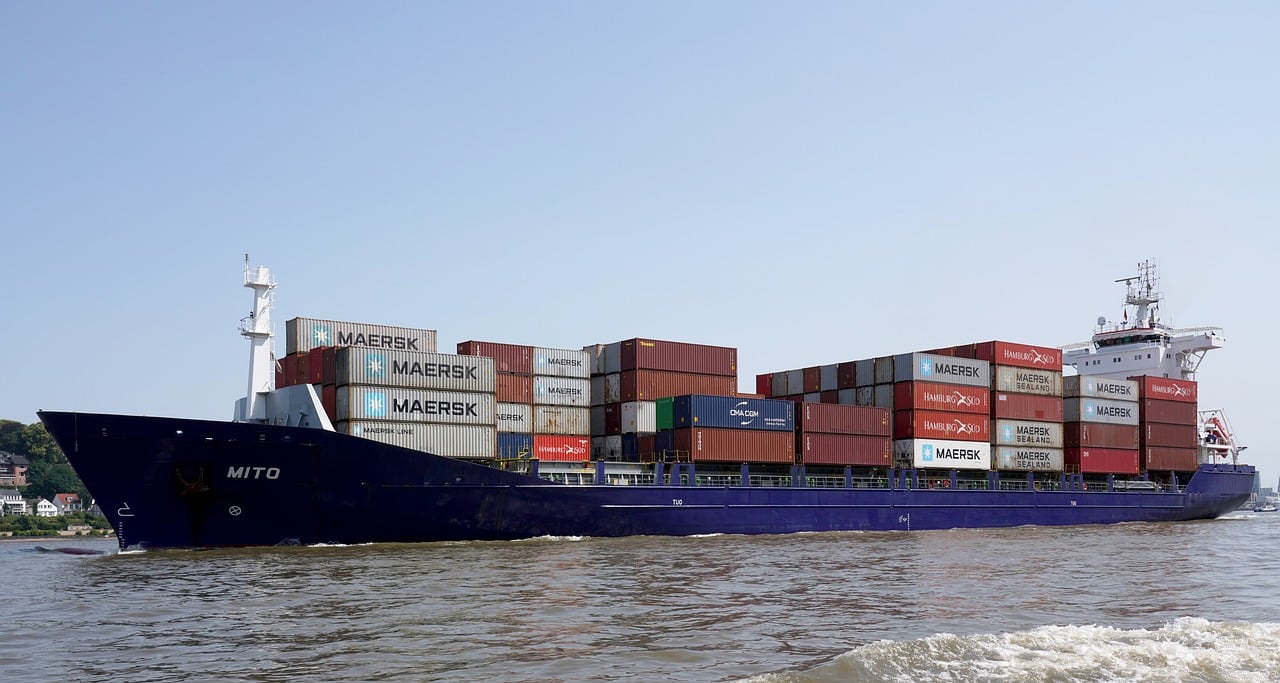Always Prepared: JUSDA Risk Management for Resilient Supply Chains

In the realm of supply chains, supply chain resilience is not just a concept but a necessity for survival. The intricate web of global trade faces constant threats, making supply chain resilience a linchpin for success. Businesses are awakening to the indispensable role of robust risk management in fortifying their operations against disruptions. Amid this landscape, JUSDA stands as a beacon of innovation and reliability, championing JUSDA's risk management strategies to bolster supply chain resilience globally.
Overview of Supply Chain Resilience
In the realm of supply chains, supply chain resilience is a critical factor for sustainable operations. Understanding the importance of supply chain resilience involves recognizing its fundamental aspects and advantages. A resilient supply chain is characterized by its ability to withstand unforeseen challenges and adapt swiftly to changing circumstances.
Definition and Key Concepts
Supply chain resilience refers to the capacity of a supply chain to persist, adapt, or transform in response to disruptions. It encompasses the strategies and mechanisms put in place to ensure continuity in operations despite external pressures. Building supply chain resilience involves enhancing visibility, fostering collaboration, and prioritizing flexibility.
Benefits of a Resilient Supply Chain
A robust supply chain resilience strategy offers numerous benefits to organizations. By proactively addressing potential risks, companies can minimize the impact of disruptions on their operations. Moreover, a resilient supply chain enables businesses to maintain customer satisfaction levels by ensuring timely deliveries and consistent service quality.
JUSDA's Approach to Risk Management
JUSDA's Risk Management Framework
JUSDA's risk management framework serves as a robust structure designed to identify, assess, and mitigate potential risks within the supply chain. By implementing a comprehensive framework, JUSDA ensures proactive risk management strategies that safeguard operations against disruptions. The framework comprises key components that synergistically work together to fortify the supply chain resilience:
Key Components
Continuous Risk Assessment: Regular evaluation of potential risks and vulnerabilities allows JUSDA to stay ahead of emerging threats and implement preemptive measures.
Data-Driven Insights: Leveraging advanced analytics and real-time data enables JUSDA to make informed decisions based on accurate risk assessments.
Collaborative Partnerships: Engaging with stakeholders across the supply chain fosters a culture of shared responsibility in managing risks effectively.
Agile Response Mechanisms: Implementing agile response mechanisms ensures swift reactions to disruptions, minimizing their impact on operations.
Implementation Strategies
JUSDA employs innovative implementation strategies to embed risk management practices seamlessly into its operations. These strategies are instrumental in enhancing supply chain resilience and ensuring operational continuity:
Adopting Real-Time Technologies: By automating supply chain risk management processes, JUSDA promotes greater resilience, transparency, and capacity to act swiftly. Real-time technologies enable proactive identification of potential risks and facilitate timely interventions to mitigate their impact.
Overhauling Processes for Greater Efficiency: Through the implementation of new functionalities and anticipation of upgrades, JUSDA optimizes its processes for enhanced efficiency. This proactive approach not only streamlines operations but also strengthens the organization's ability to navigate disruptions effectively.
Case Studies of JUSDA's Success
JUSDA's success stories exemplify the tangible outcomes of its robust risk management strategies in action. These case studies showcase how JUSDA has leveraged its expertise to overcome challenges and emerge stronger:
Real-world Examples
Oxylane Case Study:
In this case study, JUSDA overhauled its processes for greater efficiency by introducing new functionalities and anticipating future upgrades. This strategic move resulted in improved operational performance and enhanced resilience against disruptions.
Automated Supply Chain Risk Management Initiative:
By adopting real-time technologies for automating supply chain risk management, JUSDA significantly enhanced its ability to proactively identify risks and respond swiftly. This initiative underscored the importance of leveraging technology for building resilient supply chains.
Lessons Learned
Embracing innovation is key: JUSDA's success stems from its commitment to embracing innovative technologies and methodologies in risk management practices.
Collaboration drives resilience: Building collaborative partnerships across the supply chain ecosystem enhances overall resilience and enables effective risk mitigation strategies.
Strategies for Building a Resilient Supply Chain

Enhancing Visibility
Tools and Technologies
In the quest to fortify supply chain resilience, organizations are turning to cutting-edge tools and technologies to enhance visibility across their operations. The JusLink Smart Supply Chain Real-time Collaboration Platform emerges as a game-changer in this pursuit. By integrating modern technologies such as Internet of Things, cloud computing, and big data, this platform breaks down isolated silos within the supply chain. It facilitates seamless information sharing between upstream and downstream enterprises, fostering a collaborative environment that enhances operational transparency and efficiency.
Implementing JusLink VISUAL: This innovative solution enables transportation visualization, inventory tracking, and material flow visualization. By visualizing the entire supply chain process, organizations can proactively monitor goods in real-time and receive instant alerts during transit. The digitization of traceability processes ensures end-to-end visibility, safeguarding the integrity of goods throughout the supply chain journey.
Benefits of Improved Visibility
The benefits of heightened visibility extend beyond operational efficiency to encompass strategic advantages for businesses navigating today's complex supply chain landscape. Organizations leveraging advanced visibility tools experience:
Enhanced Decision-Making: Real-time insights empower organizations to make informed decisions swiftly based on accurate data analysis.
Proactive Risk Mitigation: Early identification of potential disruptions allows for proactive risk mitigation strategies, reducing the impact on operations.
Improved Customer Satisfaction: Timely responses enabled by enhanced visibility translate into improved service levels and customer satisfaction.
Optimized Resource Allocation: Precise visibility into supply chain processes enables efficient resource allocation, minimizing waste and maximizing productivity.
Increasing Flexibility
Flexible Manufacturing Processes
Flexibility lies at the core of building a resilient supply chain capable of adapting to dynamic market conditions. Embracing flexible manufacturing processes empowers organizations to respond swiftly to changing demand patterns while maintaining operational efficiency. By incorporating agile production methodologies and modular production systems, companies can optimize their manufacturing capabilities for greater adaptability.
Implementing Agile Production Methods: Agile methodologies enable rapid adjustments in production schedules based on real-time demand fluctuations. This responsiveness ensures that organizations can meet customer requirements effectively while optimizing resource utilization.
Adaptive Supply Chain Networks
The evolution towards adaptive supply chain networks represents a strategic shift in how organizations approach supply chain design. By embracing network configurations that prioritize agility and responsiveness, companies can enhance their ability to navigate uncertainties with ease.
Leveraging Dynamic Network Structures: Adaptive supply chain networks leverage interconnected nodes that can be reconfigured quickly in response to changing market dynamics or disruptions. This flexibility allows organizations to maintain operational continuity even in challenging circumstances.
Fostering Collaboration
Partnering with Suppliers
Collaboration with suppliers is a cornerstone of resilient supply chains, fostering mutual trust and shared responsibility in managing risks effectively. Establishing strong partnerships with suppliers enables seamless information exchange, joint problem-solving, and coordinated risk management efforts.
Cultivating Strategic Supplier Relationships: By nurturing long-term partnerships built on transparency and collaboration, organizations can create a robust supplier ecosystem that enhances overall supply chain resilience.
Collaborative Planning
Collaborative planning initiatives play a pivotal role in aligning stakeholders across the supply chain towards common goals and objectives. Through collaborative forecasting, demand planning, and inventory management practices, organizations can synchronize their activities for optimal performance.
Implementing Collaborative Forecasting Tools: Advanced forecasting tools facilitate data-driven decision-making by enabling stakeholders to share insights and align on future demand projections collaboratively.
Measuring Supply Chain Resilience

Key Metrics and Indicators
Collaboration Metrics
In assessing supply chain resilience, organizations rely on collaboration metrics to gauge the effectiveness of their partnerships and information-sharing practices. By tracking key indicators such as response times, joint problem-solving initiatives, and shared risk management strategies, companies can evaluate the strength of their collaborative networks. High levels of collaboration among supply chain partners correlate with improved agility in responding to disruptions and enhancing overall operational resilience.
Forecast Error Rates
Another crucial aspect of measuring supply chain resilience lies in analyzing forecast error rates. By comparing projected demand with actual outcomes, businesses can identify discrepancies and refine their forecasting models for greater accuracy. Low forecast error rates indicate a high level of predictive capability within the supply chain, enabling organizations to anticipate changes in demand patterns and proactively adjust their operations. Minimizing forecast errors is essential for optimizing inventory management, resource allocation, and customer satisfaction levels.
Using the Supply Chain Readiness Report
How to Interpret the Report
The Supply Chain Readiness Report serves as a valuable tool for organizations seeking insights into their supply chain resilience capabilities. Understanding how to interpret this report involves analyzing key performance indicators related to visibility, flexibility, collaboration, and control within the supply chain. By examining data on lead times, inventory turnover rates, supplier responsiveness, and process efficiency, companies can gain a comprehensive view of their readiness to navigate disruptions effectively.
Actionable Insights
Upon interpreting the Supply Chain Readiness Report, organizations can derive actionable insights to enhance their supply chain resilience strategies. These insights may include recommendations for improving communication channels with suppliers, implementing advanced forecasting technologies, or diversifying sourcing options to mitigate risks. By leveraging the findings from the report, companies can proactively address vulnerabilities in their supply chains and strengthen their overall resilience against unforeseen disruptions.
Supply chain resilience is the cornerstone of operational success in today's dynamic business landscape. Organizations must prioritize fortifying their supply chain resilience to navigate uncertainties and disruptions effectively. JUSDA's risk management strategies play a pivotal role in enhancing supply chain resilience globally, setting a benchmark for proactive risk mitigation practices. As businesses look towards the future, investing in robust risk management frameworks will be crucial for sustaining operations and fostering growth amidst evolving market dynamics.
